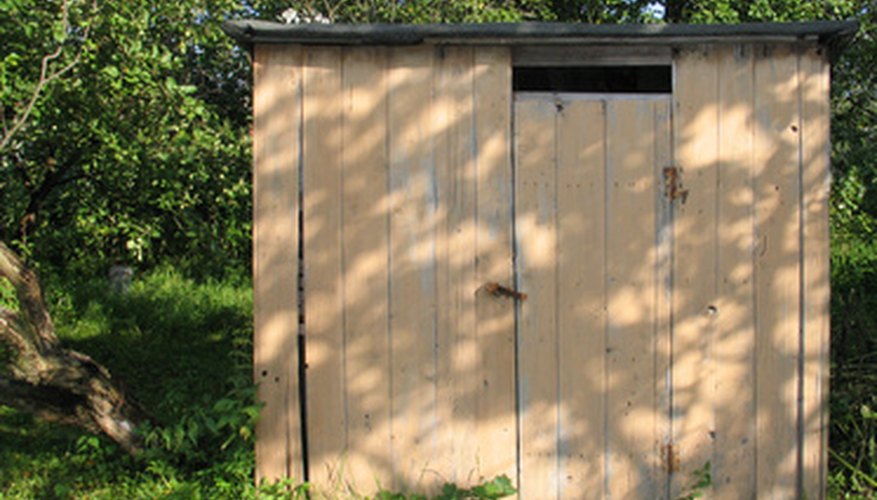Anchoring a storage or garden shed to the wall of your house provides additional stability to the outdoor structure. The downside is that a lot of houses have block or brick wall exteriors. Anchoring a shed or any outdoor structure to a block or brick wall requires the use of expandable cement anchors and masonry drill bits, which are often included in the purchase of a case of cement anchors.
Expandable Anchor Screws
The basic method of anchoring a wood shed to a block wall involves just the use of expandable concrete anchor screws. The process requires carefully measuring a few points on the wall to locate the mortar joints between blocks or bricks. The mortar joints are easier to drill. Once you have the height measurement of two or three mortar lines, mark the exterior of the shed with those heights. Drill a few holes along the lines, allowing you to line up the holes with the mortar joints and mark the position of the holes onto the wall by sliding the shed into position. A masonry drill bit easily cuts through the mortar to create a pilot hole and the expandable cement anchor fits through the hole in the shed and into the pilot hole. Use a standard drill and screwdriver drill bit to tighten the screws down and anchor the shed to the wall.
- The basic method of anchoring a wood shed to a block wall involves just the use of expandable concrete anchor screws.
- Use a standard drill and screwdriver drill bit to tighten the screws down and anchor the shed to the wall.
L-Brackets
A more stable and less intrusive method of anchoring a shed to an exterior wall involves using L-brackets. An L-bracket is a basic strip of metal shaped like an "L" with screw holes on both ends. The L-bracket mounts to the wall along a mortar joint using expandable cement anchors so that one end of the "L" is pressed against the wall, with the short end of the "L" pointing straight out from the wall. The short end of the bracket connects to the corner of the shed to hold the shed against the wall. A simple wood screw provides ample anchorage for the unit. Placing one L-bracket on each side of the shed ensures the shed will not blow away or tip.
- A more stable and less intrusive method of anchoring a shed to an exterior wall involves using L-brackets.
- The L-bracket mounts to the wall along a mortar joint using expandable cement anchors so that one end of the "L" is pressed against the wall, with the short end of the "L" pointing straight out from the wall.
Ledger Boards
A ledger board is a strip of 2-by-6-inch wood mounted to a vertical surface and used as an anchor point for porches and decks. Once again, the key to attaching the ledger board to the block wall is in the use of expandable concrete anchors driven into the mortar joints between blocks. Ledger boards installed along the base of the shed and near the roof line of the shed provide two anchor points that will firmly hold the shed in place but not flush against the blocks. A little gap between the two structures allows moisture to evaporate without damaging the wood of the shed.
- A ledger board is a strip of 2-by-6-inch wood mounted to a vertical surface and used as an anchor point for porches and decks.
- Ledger boards installed along the base of the shed and near the roof line of the shed provide two anchor points that will firmly hold the shed in place but not flush against the blocks.
Combinations
Use a combination of L-brackets and ledger boards to actually build the shed against the wall. Instead of building a four-walled shed, use the block wall as the fourth wall. The ledger board along the base will be the first board for the floor joists. The ledger boards along the top act as support for the roof structure. L-brackets installed along the exterior walls provide stability and remove gaps that could allow air in and out of the shed.
- Use a combination of L-brackets and ledger boards to actually build the shed against the wall.
